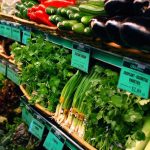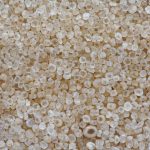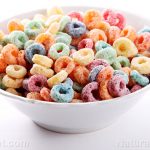
Top 41 nutrient-dense fruits and vegetables that you should incorporate into your diet
Thursday, September 22, 2022 by Zoey Sky
http://www.products.news/2022-09-22-41-nutrient-dense-fruits-vegetables-incorporate-diet.html

When buying food at the grocery, get more bang for your buck by focusing on the most nutrient-dense produce. But first, you need to know which delicious and nutritious ingredients to use in your daily meals.
If you’re not sure which fruits and vegetables to get, check out the Centers for Disease Control and Prevention‘s (CDC) list of the top 41 nutrient-dense fruits and vegetables below.
The list includes the top vegetables and fruits with at least 10 percent or more of 17 different nutrients, explained Amy Sapola, a functional medicine expert and Director of Farmacy at The Chef’s Garden in Huron, Ohio.
Here are the top 41 fruits and vegetables along with their nutrient density score:
- Watercress (100)
- Chinese cabbage/Napa cabbage (91.99)
- Chard (89.27)
- Beet greens (87.08)
- Spinach (86.43)
- Chicory (73.36)
- Leaf lettuce (70.73)
- Parsley (65.59)
- Romaine lettuce (63.48)
- Collard greens (62.49)
- Turnip greens (62.12)
- Mustard greens (61.39)
- Endives (60.44)
- Chives (54.8)
- Kale (49.07)
- Dandelion greens (46.34)
- Red pepper (41.26)
- Arugula (37.65)
- Broccoli (34.89)
- Pumpkin (33.82)
- Brussels sprout (32.23)
- Scallion (27.35)
- Kohlrabi (25.92)
- Cauliflower (25.13)
- Cabbage (24.51)
- Carrot (22.6)
- Tomato (20.37)
- Lemon (18.72)
- Iceberg lettuce (18.28)
- Strawberry (17.59)
- Radish (16.91)
- Winter squash, all varieties (13.89)
- Orange (12.91)
- Lime (12.23)
- Grapefruit (pink and red) (11.64)
- Rutabaga (11.58)
- Turnip (11.43)
- Blackberry (11.39)
- Leek (10.69)
- Sweet potato (10.51)
- Grapefruit (white) (10.47)
Humble watercress took the number one spot. Watercress is full of vitamins B9, C and K, along with folate. Meanwhile, beet greens are full of vitamins A and C.
Sapola said beet greens, which are usually cut off and thrown away, actually have more minerals than the beetroots. She added that romaine’s score of 63.48 is rather surprising since she doesn’t generally consider it “as overly high [in nutrients].”
Surprisingly, strawberries and limes ranked high, but blueberries, a favorite among many health enthusiasts, didn’t even make the cut. Sapola said that this is because the CDC’s list doesn’t consider phytonutrients and that it only factored in vitamins, minerals, protein and fiber.
Just because your favorite fruit or vegetable didn’t make the list, it doesn’t mean that they are not healthy. Remember that eating more greens is always good for you, regardless of their exact nutrient score, because each plant delivers a wonderfully unique array of macro-, micro- and phytonutrients. (Related: Nutrient-dense acai berries: The ultimate superfood for optimal health.)
If you’re looking for a more convenient way to boost your nutrient intake, try using a high-quality greens powder made with a blend of organic vegetables like leafy greens, root vegetables and sea vegetables, along with organic berries, organic herbs and prebiotic fiber.
Follow a balanced diet and incorporate a variety of different fruits and vegetables, even those that didn’t make the CDC’s powerhouse list, as long as they are accessible to you.
Tasty recipes featuring the CDC’s top 3 picks
Here are some tasty recipes to try featuring the top three superfoods from the CDC’s list of nutrient-dense fruits and vegetables.
Japanese watercress salad
This salad is made with nutty, sweet and savory watercress. Serve this salad as a side dish or as part of a multi-course Japanese dinner.
Ingredients for two servings:
- 6 Cups watercress
- 3 Tablespoons natural peanut butter
- 2 Tablespoons mirin
- 1 1/2 Tablespoon soy sauce
- 1 Teaspoon rice vinegar
- 1/2 Teaspoon honey (Use pure maple syrup or sugar for a vegan version.)
- A pinch of salt
Preparation:
- In a medium size pot, bring six cups of water salted with a tablespoon of kosher salt to boil.
- Mix the peanut butter, honey, rice vinegar, soy sauce and mirin in a medium bowl. Whisk until smooth, then set the mixture aside.
- Rinse the watercress. Drain the watercress, then separate the leaves from the stems.
- Roughly chop the watercress stems and add to the boiling water with the leaves. Cook until the stems are tender but yield a soft crunch for at least two to three minutes.
- Drain the cooked watercress.
- Rinse the watercress under cold water and softly squeeze out excess water. Use a paper towel to pat the watercress dry, then and add to a mixing bowl.
- Pour the dressing over the dried watercress, then toss until the watercress is evenly coated with the dressing.
- Serve.
Cabbage lo mein
This recipe for cabbage lo mein includes a variety of tasty vegetables like cabbages, broccoli and red peppers.
Ingredients for four servings:
- 12 Ounces boneless, skinless chicken breast, cut into 1/4-inch slices
- 8 Ounces lo mein noodles
- 5 Ounces mushrooms, thinly sliced
- 4?1/2 cups napa cabbage (1/2 head), thinly sliced
- 3/4 Cup unsalted chicken broth
- 2 Cups small broccoli florets or about 1 large crown
- 1 Cup snow peas, halved
- 3 Tablespoons reduced-sodium soy sauce
- 3 Tablespoons vegetable oil, divided
- 2 Tablespoons chopped fresh ginger
- 2 Tablespoons and 2 teaspoons sesame oil, divided
- 1 Teaspoon chili-garlic sauce
- 1 Teaspoon cornstarch
- 1/4 Teaspoon crushed red pepper
- 1 Red bell pepper, sliced
- 1 Bunch scallions, thinly sliced
- 4 Cloves garlic, minced
Preparation:
- Combine two tablespoons of sesame oil, soy sauce and crushed red pepper in a large bowl. Add the chicken, toss to coat, then set aside.
- Bring a large pot of water to a boil and cook the lo mein noodles in the boiling water according to the package directions.
- Drain the noodles, then transfer them to a large bowl. Toss the cooked noodles with the remaining two teaspoons of sesame oil and chili-garlic sauce. Set aside.
- Heat one tablespoon of the vegetable oil in a large skillet or wok over medium-high heat until shimmering. Add the mushrooms and cook until juices are released and the mushrooms are golden and tender for about four to five minutes.
- Stir in the garlic, ginger and scallions into the skillet with the mushrooms. Cook until fragrant or one minute. Transfer the mushrooms to a medium bowl.
- Add one tablespoon of vegetable oil to the pan and heat over medium-high heat until shimmering. Add the broccoli, bell pepper and snow peas. Cook the vegetables until tender and crisp or for two to three minutes. Stir in the cabbage and cook until wilted or two minutes. Transfer the cooked vegetables to the bowl with the mushroom mixture.
- Heat the remaining one tablespoon of vegetable oil in the pan over medium-high heat. Add the reserved chicken and leave the sauce in the bowl. Saute the chicken until cooked through for two to three minutes.
- Add the chicken broth and cornstarch to the reserved sauce and whisk to combine. Add the sauce to the pan with the chicken, then simmer until thickened for one to two minutes.
- Add the vegetable mixture to the pan and toss to combine. Transfer the chicken and vegetables to the bowl with the noodles, then toss again to combine before serving.
Braised Swiss chard with bacon and hot sauce
This recipe pairs Swiss chard with savory bacon, with a bit of hot sauce for a delicious kick.
Ingredients for eight servings:
- 2 Large bunches rainbow chard
- 6 Ounces bacon, finely chopped
- 2 Tablespoons apple cider vinegar
- 2 Tablespoons mild hot sauce
- 1 Tablespoon vegetable oil
- 2 Teaspoons light brown sugar
- 1 Large onion, chopped
- 8 Garlic cloves, thinly sliced
- Freshly ground pepper
- Kosher salt
Preparation:
- Remove the ribs and stems from the Swiss chard leaves. Cut in half lengthwise, then slice crosswise into two-inch pieces, and set them aside.
- Tear the Swiss chard leaves into large pieces and set aside.
- Combine the vinegar, hot sauce and brown sugar in a small bowl. Stir until the sugar is dissolved. Set the sauce aside.
- Heat the vegetable oil in a large pot over medium heat, then cook the bacon. Stir often and cook until the bacon is lightly browned and crisp for about seven to 10 minutes.
- Add the onion to the bacon and cook, stirring occasionally, until softened for about five to eight minutes.
- Add the garlic and reserved chard stems to the bacon. Season with salt and pepper. Cook and stir occasionally until the stems are crisp-tender, for about seven to 10 minutes.
- Add the reserved chard leaves to the pot one handful at a time. Let the leaves wilt slightly before adding more. Add the sauce to the pot and stir to coat.
- Season with salt and pepper if needed before serving.
Follow a balanced diet and eat a wide variety of fruits and vegetables to make sure that you get the nutrients you need for your overall health.
Go to Superfoods.news to learn more about other nutritious fruits and vegetables.
Watch the video below to find out how watercress can protect you against cancer.
This video is from the Natural News channel on Brighteon.com.
More related stories:
Kale is a nutrient-dense superfood because of these 7 health benefits.
Moringa is a nutrient-dense superfood that protects you from oxidative damage.
5 Tips for safely foraging nutrient-dense food.
Sources include:
Tagged Under: Tags: CDC, food science, fresh, fruits, functional food, goodfood, goodhealth, grocery, nutrients, organics, products, proper nutrition, recipes, superfood, vegetables, veggies
RECENT ARTICLES


Bill Gates, WEF promoting dangerous GMO foods and fake foods

Top 41 nutrient-dense fruits and vegetables that you should incorporate into your diet
By Zoey Sky

Nitrogen fertilizer prices are expected to rise – and the cost of natural gas is no longer the only factor

White House ‘nutrition advisor’ claims lucky charms are healthier than chicken
By News Editors
COPYRIGHT © 2017 PRODUCTS NEWS


